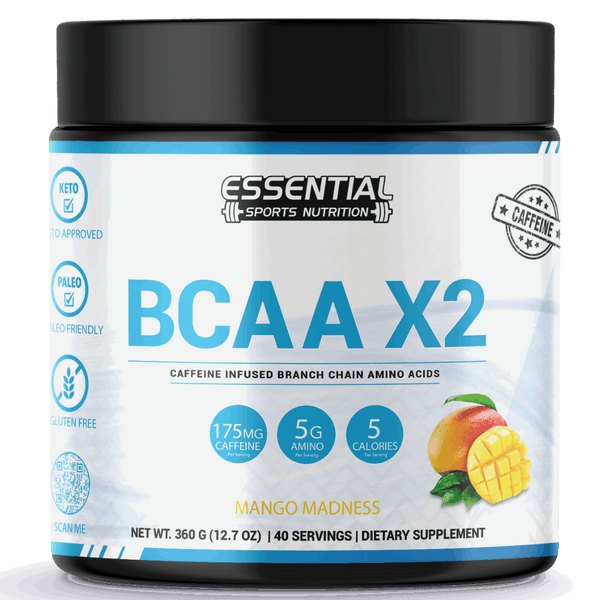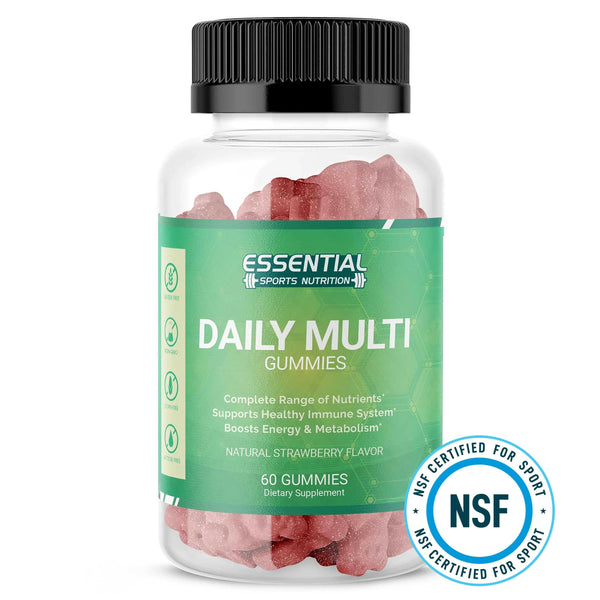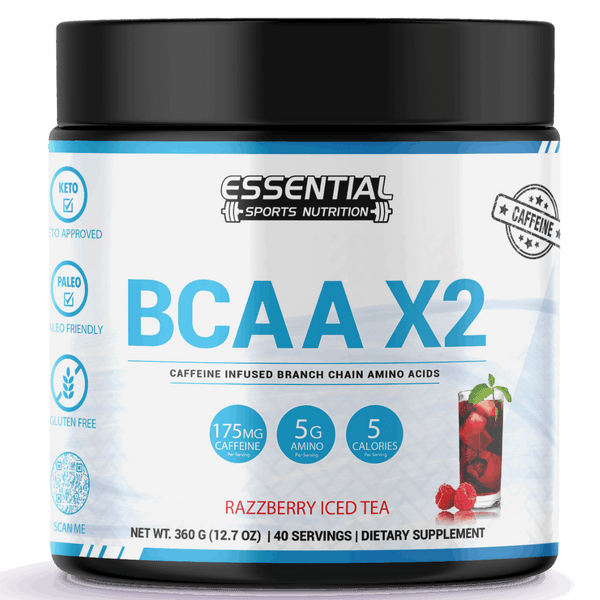How to Prevent Wrist Pain When Curling: Tips for Bicep Curl Exercises
How to Prevent Wrist Pain When Curling: Tips for Bicep Curl Exercises
If you love to lift weights, you might know all about the aches and pains. Particularly, you've felt the sting while doing bicep curls or bench presses. Wrist pain is a common issue. It can run down your inner forearm, making simple tasks uncomfortable. This pain usually comes from putting too much pressure on the wrist's soft tissues, called the Triangular Fibrocartilage Complex (TFCC). Twisting and bearing weight on your wrists, as seen in weightlifting or playing sports, are the main culprits.
It's key to know what causes wrist pain and how to avoid it to keep hitting the gym. Swapping regular bicep curls with dumbbell variations can ease your wrists. This not only lowers injury risk but also ensures your workout is equally tough on both arms. Plus, focusing on wrist exercises can do wonders for stopping or easing the pain.

Key Takeaways
Wrist pain when curling is often caused by strains to the TFCC.
This pain can extend from the wrist down the forearm.
Activities involving wrist compression and twisting increase the risk of injury.
Using dumbbells instead of barbells can mitigate the risk of wrist pain.
Wrist exercises are essential for preventing and treating pain.
Understanding Wrist Pain: Causes and Symptoms
Wrist pain in lifters often comes from hard tasks like lifting heavy weights. This can stress the wrist joint a lot. It affects the small muscles and tendons around the wrist. Knowing the reasons and signs of wrist pain helps avoid injury risks.
Common Causes of Wrist Pain
Wrist pain's main causes are overusing the joint or doing exercises wrong. Lifting heavy things often can hurt the wrist. This can cause swelling, tendinitis, and cartilage tears, especially in the Triangular Fibrocartilage Complex (TFCC) of the wrist.
Recognizing Symptoms of Wrist Pain
Spotting wrist pain signs early is key to prevent more damage. You might feel pain in your wrist and it might stretch to the forearm. This is more obvious after activities that twist or press your wrist. Watch out for swelling, pain to touch, or if moving your wrist is harder. These could mean a bigger problem due to wrong exercise methods or too much effort.
Why Curling Hurts Your Wrists

Do you like to lift weights? It's important to note why your wrists could hurt, especially in activities like curling. The pain often comes from wrong moves and using your wrists the wrong way too much.
Repetitive Motions and Strain
Lifting weights over and over again is tough on the small muscles and tendons in your wrists. Such actions can lead to swelling and pain, especially in heavy curl exercises. With time, these little injuries can add up to bigger problems like tendinitis or serious weightlifting injuries.
Improper Form and Heavy Weights
Lifting wrongly or too much can make your wrist pain worse. When you curl, if your wrists are in the wrong position, it can hurt you more or start a new injury. To stay safe, pick the right weight for you and make sure your wrists are straight when lifting. If you don't, you might get a bad weightlifting injury. This could stop you from training how you'd like in the future.
How the Triangular Fibrocartilage Complex (TFCC) is Involved
The Triangular Fibrocartilage Complex, or TFCC, stabilizes the wrist. It helps a lot during twisting movements and when you carry weight. This complex is made of cartilage and ligaments. It keeps your wrist strong. Knowing about it is key if your wrist and forearm hurt.
In exercises like bicep curls with barbells, the TFCC can get stressed. This happens from the force of moving your wrist in circles. Over time, this can hurt the TFCC, causing an injury.
If the TFCC is strained or hurt, you'll feel a lot of pain in your wrist and forearm. This kind of pain often needs a doctor's help. The TFCC doesn't get better on its own. You might even need surgery if it's really bad, like if there's a tear.
| TFCC Roles | Impact During Weightlifting |
|---|---|
| Stabilizes the wrist | Maintains integrity during exercises |
| Supports rotational movements | Allows proper wrist torque |
| Bears weight | Keeps ulnar deviation in check |
To protect the TFCC, use the right technique and avoid too much stress on your wrist. It's important to keep your wrist in the correct position. Don't let it bend too much when you're lifting weights. This will help your wrist stay healthy and stop the pain.
Preventing Wrist Pain When Curling
To prevent wrist pain when curling, start with special wrist exercises and keep your form correct. This will keep your wrists strong and flexible. It lets you do exercises like straight bar curls pain-free.
Warm-Up Exercises for Your Wrists
Wrist warm-up exercises lessen the chance of hurting your wrists. Good exercises to do are:
Wrist circles: Rotate your wrists both ways to get more flexible wrists.
Wrist extensions: Stretch your wrist by gently pulling your fingers back. It helps stretch your tendons and muscles.
Wrist rotations: Rotate your wrists steadily to get the joints ready and boost blood flow.
These exercises prep your wrists for the strains of lifting techniques like straight bar curls.
Proper Curling Techniques
The way you lift is key to preventing wrist pain. Here's how to lift right:
Neutral wrist position: Keep your wrists and forearms straight to lower stress.
Elbows close to the body: It stabilizes the lift and makes weight distribution even, reducing injury risk.
Appropriate weight selection: Pick weights that match your strength to avoid strain.
Pair these wrist pain prevention steps with correct lifting techniques. This makes your workout safer and better.
Effective Wrist Exercise Routines
It's key to work on your wrist's strength to prevent strains when lifting. Wrist strengthening routines are essential. Adding forearm exercises and wrist curls is a great way to do this. It will make your wrist muscles and tendons stronger.
Here are some exercises to try:
Wrist Curls: They boost the strength and endurance of your wrist flexors. Use an underhand grip to lift and lower a dumbbell. This works your wrists well.
Reverse Biceps Curl: This exercise helps not only your biceps but also your important wrist and forearm muscles. It can improve your grip strength too. Use an overhand grip for this one.
Grip Strength Enhancers: Hand grips or squeezing a ball can really boost your grip strength. This means you'll have better control when lifting heavy weights.
Using these exercises will let you lift better and safer. You'll be less likely to have wrist pain or get injured. Here's a workout plan you can follow:
| Exercise | Sets | Reps |
|---|---|---|
| Wrist Curls | 3 | 15 |
| Reverse Biceps Curl | 3 | 12 |
| Grip Strength Squeezes | 4 | 20 |
| Forearm Extensions | 2 | 10 |
Using Wrist Wraps and Other Supports
The right support tools, like wrist wraps, make your lifting better. They boost stability and lower the chance of getting hurt. Wrist wraps are especially helpful during tough lifts, such as barbell curls.
Benefits of Wrist Wraps
Wrist wraps are key in keeping your lifts safe. They let you handle heavier weights. Their main advantages are:
Increased Stability: Wraps keep your wrist's tiny muscles and tendons steady, cutting down on strains.
Improved Form: They help keep your wrists straight. This is vital for exercises like barbell curls that need precise wrist positioning.
Reduced Pain: If you already have wrist pain, wraps stop your wrists from moving too much during lifts.
How to Properly Use Wrist Wraps
Knowing how to wear wrist wraps is essential. It helps you get the most out of your equipment. Here’s how to do it right:
Positioning: Start by slipping the loop around your thumb. This makes sure the wrap stays put.
Wrapping: Then, wrap it snugly around your wrist. Make sure each layer slightly overlaps. This creates a strong support.
Adjust and Secure: Make the tension just right so it supports you without cutting off blood flow. Finally, strap it in tightly with the Velcro.
Following these steps maximizes what your wrist wraps can do. It makes your heavy lifting safer and boosts your performance.
| Feature | Wrist Wraps | Other Lifting Supports |
|---|---|---|
| Primary Use | Stabilizing wrist during lifts | Varies (e.g., knee, elbow supports) |
| Main Benefit | Enhanced wrist support | Support for various joints |
| Application | Wrist wrapping techniques | Depending on the design |
Common Mistakes to Avoid
Weightlifting is great, but you must watch out for specific mistakes. These errors can cause serious wrist pain and slow down your progress. Let’s look at two big mistakes you should avoid.
Overloading Weights
Lifting weights that are too heavy is a mistake. This can mess up your form and hurt your wrists. Always start with weights you can easily handle. Then, you can increase the weight as you get stronger. Doing this keeps your wrists safe and helps you get better at lifting without injury.
Ignoring Pain Signs
It's a big mistake to ignore wrist pain when lifting. This pain could be a sign of a serious problem. If you push through the pain, you might hurt yourself badly. Always pay attention to what your body is telling you. If something hurts, stop and check it out. Don’t be afraid to get help from an expert. This way, you can protect your wrists and enjoy lifting weights for a long time.
Proper Form and Technique in Curling
Mastering the curl technique is key. It helps avoid wrist strain and keep your wrists stable when you work out. Start by keeping your wrists in a neutral position as you lift. This way, you use the right wrist muscles, making what you do both effective and safe.
Choosing the right weight for you is crucial. If the weight is too much, your form can suffer, which might lead to injuries. Concentrate on how you curl. Keep your elbows near your body and move slowly and smoothly.
Use proper grips with each set so the weight is evenly spread.
Take breaks between sets to give your wrist muscles time to recover.
Adding stretches to your workout can increase your flexibility and lower stress levels.
By applying these tips, you can lift weights without hurting your wrists. Doing curls correctly not only ensures your wrists stay in good shape but also gets you the most out of your exercise.
| Technique | Benefit |
|---|---|
| Neutral Wrist Position | Engages Wrist Flexors |
| Appropriate Weight Selection | Prevents Wrist Strain |
| Proper Gripping | Distributes Weight Evenly |
| Pauses Between Sets | Allows Muscle Recovery |
| Stretching | Enhances Flexibility |
Recovery Strategies for Wrist Pain
Wrist pain can really disrupt your life and keep you from your goals. To get better quickly and safely, it's important to use the right strategies. Here, we'll show you how to handle and lessen wrist pain.
Rest and Ice Applications
Resting your wrists is crucial for healing. Stop activities that stress your wrists, like lifting weights. Cooling them with ice helps lessen swelling and pain. Use ice packs for 15-20 minutes every few hours at first. This advice is key to managing pain and is often given by doctors.
Consulting a Doctor or Therapist
If wrist pain does not go away or gets worse, see a doctor or therapist. They'll make a plan just for you. They might suggest exercises to make your wrist stronger and more flexible. Listening to experts speeds up recovery and stops future wrist issues.
Conclusion

When doing bicep curls, it's key to avoid wrist pain. You can stay safe by warming up, using the right form, and choosing the correct weights. This way, you can steer clear of wrist injuries and make your workouts better. It's vital to care for your wrists to meet your fitness targets.
It's smart to wear wrist supports if needed and to avoid certain lifting mistakes. If your wrists hurt, take the time to rest and ice them. Getting help from a healthcare expert is also a good idea. Being proactive about your wrist health keeps you on track to fitness success.
In short, looking after your wrists while curling helps more than just your curls. It makes your whole workout routine safer and more effective. Remember these tips for preventing and healing wrist pain. This knowledge will help you avoid delays and stay focused on your fitness goals.
Wrist Pain from Bicep Curls FAQs
Q: What are the common causes of wrist pain when curling?
A: Wrist pain when curling can be caused by improper wrist positioning, using weights that are too heavy, performing bicep curls with incorrect form, or putting excessive stress on the wrists during exercises like barbell or dumbbell curls.
Q: How can I avoid wrist pain when curling?
A: To avoid wrist pain when curling, make sure to maintain proper wrist positioning, use appropriate weights, focus on your form, and consider using wrist wraps for additional support.
Q: What exercises can I do as alternatives to traditional bicep curls to prevent wrist pain?
A: To prevent wrist pain, consider doing reverse curls, hammer curls, or incorporating exercises that target the biceps without putting as much stress on the wrists, such as bench presses or forearm-focused movements.
Q: How can wrist wraps help with wrist pain when curling?
A: Wrist wraps can provide additional support and stability to the wrists, helping to reduce strain and alleviate wrist pain during exercises like bicep curls or other movements that involve the wrists.
Q: What are the potential long-term effects of ignoring wrist pain during curling exercises?
A: Ignoring wrist pain during curling exercises can lead to serious injuries, chronic pain in the wrists and forearms, and may hinder your overall fitness progress if left untreated.
Q: How can I fix wrist pain that occurs during bicep curls?
A: To fix wrist pain during bicep curls, focus on improving your wrist and forearm strength, adjust your grip and wrist position, use proper form, and consider consulting with a fitness professional to identify and address any underlying issues.
Q: What role does the triangular fibrocartilage complex play in wrist pain and how can it be prevented?
A: The triangular fibrocartilage complex (TFCC) is a structure in the wrist that can be strained during certain movements, leading to wrist pain. To prevent TFCC-related pain, it's important to strengthen the wrist and forearm muscles, avoid excessive stress on the wrist, and maintain a proper range of motion during exercises.




























